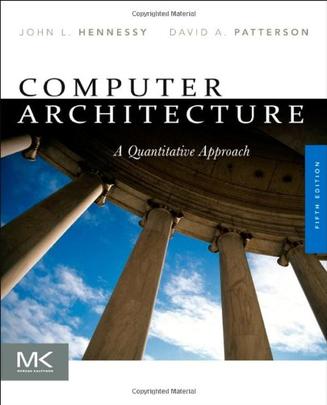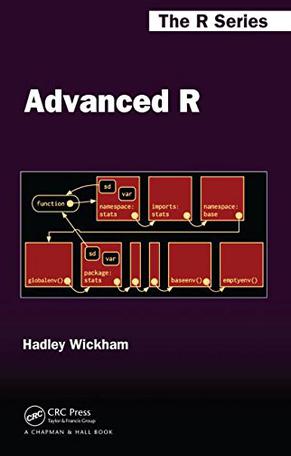-

剑指Offer
《剑指Offer:名企面试官精讲典型编程题》剖析了50个典型的程序员面试题,从基础知识、代码质量、解题思路、优化效率和综合能力五个方面系统整理了影响面试的5个要点。全书分为7章,主要包括面试的流程,讨论面试流程中每一环节需要注意的问题;面试需要的基础知识,从编程语言、数据结构及算法三方面总结了程序员面试的知识点;高质量的代码,讨论影响代码质量的3个要素(规范性、完整性和鲁棒性),强调高质量的代码除了能够完成基本的功能之外,还能考虑到特殊情况并对非法输入进行合理的处理;解决面试题的思路,总结在编程面试中解决难题的常用思路,如果在面试过程中遇到了复杂的难题,应聘者可以利用画图、举例和分解复杂问题3种方法化繁为简,先形成清晰的思路再动手编程;优化时间和空间效率,介绍如何优化代码的时间效率和空间效率,读完这一章读者将学会常用的优化时间效率及空间换时间的常用算法,从而在面试中找到最优的解法;面试中的各种能力,本章总结应聘者在面试过程中如何表现学习能力和沟通能力,并通过具体的面试题讨论如何培养知识迁移能力、抽象建模能力和发散思维能力;两个面试案例,这两个案例总结了应聘者在面试过程中哪些举动是不好的行为,而哪些表现又是面试官所期待的行为。 -

实用Common Lisp编程
由塞贝尔编著的《实用Common Lisp编程》是一本不同寻常的Common Lisp入门书。《实用Common Lisp编程》首先从作者的学习经过及语言历史出发,随后用21个章节讲述了各种基础知识,主要包括:REPL及Common Lisp的各种实现、S-表达式、函数与变量、标准宏与自定义宏、数字与字符以及字符串、集合与向量、列表处理、文件与文件I/O处理、类、FORMAT格式、符号与包,等等。而接下来的9个章节则翔实地介绍了几个有代表性的实例,其中包含如何构建垃圾过滤器、解析二进制文件、构建ID3解析器,以及如何编写一个完整的MP3 Web应用程序等内容。最后还对一些未介绍内容加以延伸。 《实用Common Lisp编程》内容适合Common Lisp初学者及对之感兴趣的相关人士。 -

Computer Architecture, Fifth Edition
The computing world today is in the middle of a revolution: mobile clients and cloud computing have emerged as the dominant paradigms driving programming and hardware innovation today. The Fifth Edition of Computer Architecture focuses on this dramatic shift, exploring the ways in which software and technology in the cloud are accessed by cell phones, tablets, laptops, and other mobile computing devices. Each chapter includes two real-world examples, one mobile and one datacenter, to illustrate this revolutionary change. Updated to cover the mobile computing revolution Emphasizes the two most important topics in architecture today: memory hierarchy and parallelism in all its forms. Develops common themes throughout each chapter: power, performance, cost, dependability, protection, programming models, and emerging trends ("What's Next") Includes three review appendices in the printed text. Additional reference appendices are available online. Includes updated Case Studies and completely new exercises. -

Advanced R
Advanced R presents useful tools and techniques for attacking many types of R programming problems, helping you avoid mistakes and dead ends. With more than ten years of experience programming in R, the author illustrates the elegance, beauty, and flexibility at the heart of R. The book develops the necessary skills to produce quality code that can be used in a variety of circumstances. You will learn: -The fundamentals of R, including standard data types and functions -Functional programming as a useful framework for solving wide classes of problems -The positives and negatives of metaprogramming -How to write fast, memory-efficient code This book not only helps current R users become R programmers but also shows existing programmers what’s special about R. Intermediate R programmers can dive deeper into R and learn new strategies for solving diverse problems while programmers from other languages can learn the details of R and understand why R works the way it does. -

Effective Modern C++
Learn how to program expertly with C++ with this practical book from Scott Meyers, one of the world's foremost authorities on this systems programming language. Scott Meyers takes some of the most difficult pieces of C++ code and unfurls them so that you can see how to manipulate your own project code. This is the first book to contain content written with the C++14 standard. Tackle 42 separate C++ problems and solutions Learn critical techniques for success on topics from smart pointers to lambda expressions Understand key concepts by taking the C++ 98 standard to C++ 11 and then to C++ 14 -

领域特定语言
本书是DSL领域的丰碑之作,由世界级软件开发大师和软件开发“教父”Martin Fowler历时多年写作而成,ThoughtWorks中国翻译。全面详尽地讲解了各种DSL及其构造方式,揭示了与编程语言无关的通用原则和模式,阐释了如何通过DSL有效提高开发人员的生产力以及增进与领域专家的有效沟通,能为开发人员选择和使用DSL提供有效的决策依据和指导方法。 全书共57章,分为六个部分:第一部分介绍了什么是DSL,DSL的用途,如何实现外部DS和内部DSL,如何生成代码,语言工作台的使用方法;第二部分介绍了各种DSL,分别讲述了语义模型、符号表、语境变量、构造型生成器、宏和通知的工作原理和使用场景;第三部分分别揭示分隔符指导翻译、语法指导翻译、BNF、易于正则表达式表的词法分析器、递归下降法词法分析器、解析器组合子、解析器生成器、树的构建、嵌入式语法翻译、内嵌解释器、外加代码等;第四部分介绍了表达式生成器、函数序列、嵌套函数、方法级联、对象范围、闭包、嵌套闭包、标注、解析数操作、类符号表、文本润色、字面量扩展的工作原理和使用场景;第五部分介绍了适应性模型、决策表、依赖网络、产生式规则系统、状态机等计算模型的工作原理和使用场景;第六部分介绍了基于转换器的代码生成、模板化的生成器、嵌入助手、基于模型的代码生成、无视模型的代码生成和代沟等内容。